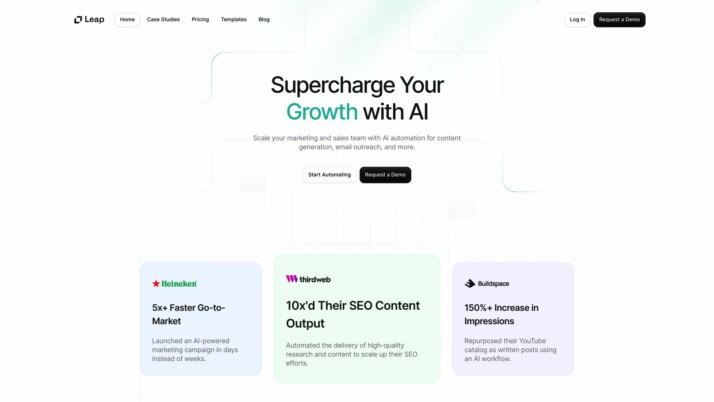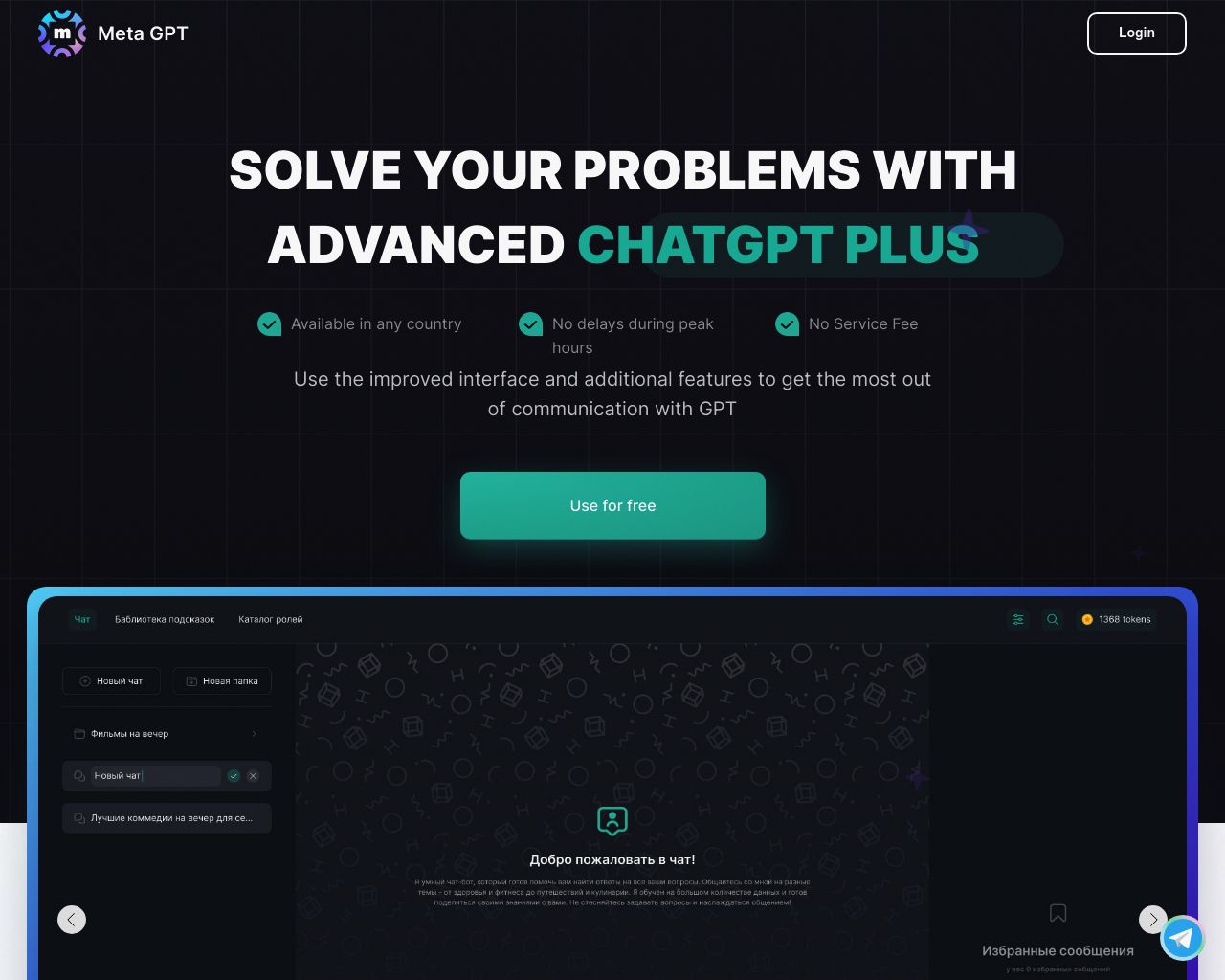Leap AI vs. MetaGPT: Comparing AI Development Platforms
AI development platforms are reshaping how businesses harness cutting-edge technology. Leap AI vs. MetaGPT offer distinct approaches to AI implementation, each with unique strengths and limitations. Leap AI simplifies AI workflow creation with its drag-and-drop interface, while MetaGPT excels in multi-agent collaboration for complex tasks. This comparison explores their core features, use cases, and overall utility. We’ll examine how these platforms stack up against SmythOS, a versatile solution that combines user-friendly design with advanced AI capabilities. Whether you’re a developer seeking powerful APIs, a business leader focused on scalability, or a non-technical user looking for accessible AI tools, this analysis will help you navigate the evolving landscape of AI platforms and choose the solution that best fits your needs.
Leap AI Overview
Leap AI empowers users to create sophisticated AI workflows without coding expertise. The platform’s drag-and-drop interface and comprehensive SDK support enable rapid development of AI-powered applications across industries.
Leap AI offers a rich template library for quick setup of AI tools like blog post generators, music creators, and lead summarizers. It supports integration with popular AI models including OpenAI GPT, Mistral 7b, and Stable Diffusion XL, expanding the range of possible AI tasks from text generation to image and music creation.
Leap AI empowers users to create sophisticated AI workflows without coding expertise. The platform’s drag-and-drop interface and comprehensive SDK support enable rapid development of AI-powered applications across industries.


Screenshot of Leap AI Website
The platform seamlessly integrates with widely-used business tools such as Slack, HubSpot, and Zendesk, enhancing workflow efficiency. Leap AI’s user-friendly interface allows direct design and execution of workflows from the dashboard. For those seeking customized solutions, the platform provides tools for fine-tuning and training AI models on proprietary datasets.
While Leap AI excels in accessibility and integration, it lacks some advanced features found in other platforms. The absence of hosted agents, autonomous agents, and explainability tools may limit its applicability for complex enterprise scenarios. Additionally, the platform does not offer a debug mode or support for multi-agent collaboration, which could pose challenges for troubleshooting and scaling sophisticated AI systems.
Leap AI positions itself as a versatile solution for businesses and individuals looking to harness AI capabilities without extensive technical knowledge. Its strength lies in simplifying AI workflow creation and integration, making it particularly suitable for small to medium-sized enterprises and teams new to AI implementation.
MetaGPT Overview
MetaGPT transforms multi-agent collaboration by combining human Standardized Operating Procedures (SOPs) with Large Language Models (LLMs). This open-source framework, developed by researchers from prestigious institutions, revolutionizes AI agent teamwork for complex tasks, particularly in software engineering.


MetaGPT assigns distinct roles to agents, mirroring a traditional software company structure. Product managers, architects, project managers, engineers, and QA testers collaborate efficiently using SOPs encoded as prompt sequences. This approach enhances output consistency and reliability, reducing errors common in multi-agent systems.
MetaGPT assigns distinct roles to agents, mirroring a traditional software company structure… This approach enhances output consistency and reliability, reducing errors common in multi-agent systems.
The platform’s unique assembly line paradigm breaks tasks into manageable subtasks for specialized agents. This method ensures each agent contributes expertise to the project, resulting in more accurate solutions. MetaGPT generates comprehensive documentation throughout the development process, including requirement documents, design artifacts, flowcharts, and interface specifications.
MetaGPT’s vision establishes a new standard in AI collaboration by leveraging human-like SOPs and structured communication protocols. The framework expands AI agent capabilities, enabling them to tackle complex tasks across various domains. However, MetaGPT lacks some features found in other platforms, such as hosted agents, visual builders, and no-code options, which may limit its accessibility for non-technical users.
Integration with existing tools and systems remains a challenge for MetaGPT. While it excels in simulating software company operations, it may require additional development to seamlessly connect with diverse platforms and workflows. This limitation could impact its adoption in enterprise environments with established tech stacks.
Feature Comparison
Leap AI and MetaGPT offer distinct approaches to AI agent development, with notable feature gaps between them. Leap AI provides a user-friendly platform with a drag-and-drop interface and pre-built templates, making it accessible for users without extensive coding knowledge. However, it lacks some advanced capabilities that MetaGPT offers.
MetaGPT excels in multi-agent collaboration, implementing a unique framework that mimics software company operations. It assigns specialized roles to agents, enabling complex task completion through structured workflows. This approach allows for more sophisticated problem-solving and autonomous operation compared to Leap AI. MetaGPT generates comprehensive documentation throughout the development process, including requirement documents and design artifacts, which Leap AI does not provide.
In terms of core components, Leap AI offers integrations with popular business tools and supports various AI models, but lacks the depth of MetaGPT’s multi-agent orchestration. MetaGPT’s use of Standardized Operating Procedures (SOPs) provides a more robust framework for complex task execution. Regarding security, both platforms implement data encryption, but MetaGPT’s open-source nature may offer more transparency in its security measures. Leap AI provides more straightforward OAuth and IP control features, which may be more suitable for businesses requiring quick implementation of security protocols.
Feature Comparison Table
| Leap AI | MetaGPT | SmythOS | |
|---|---|---|---|
| CORE FEATURES | |||
| Hosted Agents (Dev, Production) | ❌ | ✅ | ✅ |
| Visual Builder | ✅ | ❌ | ✅ |
| No-Code Options | ✅ | ❌ | ✅ |
| Autonomous Agents | ❌ | ✅ | ✅ |
| Explainability & Transparency | ❌ | ✅ | ✅ |
| Debug Tools | ❌ | ✅ | ✅ |
| Multi-Agent Collaboration | ❌ | ✅ | ✅ |
| SECURITY | |||
| Constrained Alignment | ❌ | ✅ | ✅ |
| IP Control | ✅ | ❌ | ✅ |
| COMPONENTS | |||
| Data Lakes | ❌ | ❌ | ✅ |
| DEPLOYMENT OPTIONS (EMBODIMENTS) | |||
| Staging Domains | ✅ | ❌ | ✅ |
| DATA LAKE SUPPORT | |||
| Hosted Vector Database | ❌ | ❌ | ✅ |
| Sitemap Crawler | ✅ | ❌ | ✅ |
| YouTube Transcript Crawler | ✅ | ❌ | ✅ |
Best Alternative to Leap AI and MetaGPT
SmythOS stands out as the superior alternative to Leap AI and MetaGPT, offering a comprehensive platform for AI agent development and deployment. Our drag-and-drop interface empowers users to create sophisticated AI workflows without extensive coding knowledge, making advanced AI capabilities accessible to a broader audience.
Unlike Leap AI’s limited autonomous capabilities and MetaGPT’s complex setup requirements, SmythOS provides a perfect balance of power and usability. We offer autonomous agents that can operate independently, solving complex problems and collaborating in multi-agent systems. This feature significantly outperforms Leap AI’s more basic automation tools and matches or exceeds MetaGPT’s collaborative framework.
SmythOS provides a perfect balance of power and usability. We offer autonomous agents that can operate independently, solving complex problems and collaborating in multi-agent systems.
SmythOS excels in its extensive integration ecosystem, supporting a wide range of APIs, AI models, and tools. This versatility allows for seamless incorporation into existing business processes, surpassing both Leap AI and MetaGPT in terms of adaptability. Our platform also offers superior debugging and monitoring tools, ensuring transparency and explainability in AI operations — a critical feature lacking in Leap AI and only partially addressed by MetaGPT.
Perhaps most importantly, SmythOS provides unparalleled deployment flexibility. Users can deploy AI agents as APIs, webhooks, scheduled tasks, or even as ChatGPT plugins. This versatility, combined with our robust security features and scalability, makes SmythOS the ideal choice for businesses of all sizes looking to leverage AI technology effectively. Whether you’re a small startup or a large enterprise, SmythOS offers the tools and capabilities to drive innovation and efficiency in your AI initiatives.
Conclusion
Leap AI and MetaGPT offer unique approaches to AI development, each with distinct strengths. Leap AI excels in user-friendliness, providing a drag-and-drop interface and pre-built templates that make AI accessible to non-technical users. Its integration capabilities with popular business tools enhance workflow efficiency. MetaGPT, on the other hand, shines in multi-agent collaboration, mimicking software company operations for complex task completion.
However, SmythOS emerges as the superior choice, combining the best of both worlds while addressing their limitations. Our platform offers unparalleled versatility with its “Create Once, Deploy Anywhere” approach, allowing seamless integration across multiple environments. SmythOS’s drag-and-drop interface rivals Leap AI’s ease of use, while our multi-agent orchestration capabilities surpass MetaGPT’s collaborative features.
Unlike Leap AI and MetaGPT, SmythOS provides a comprehensive suite of features including hosted agents, debug mode, and extensive API integrations. Our platform supports various AI models, enabling users to leverage cutting-edge technologies without being tied to a single provider. SmythOS’s scalability, security measures, and support for multimodal interactions make it ideal for businesses of all sizes, from startups to large enterprises.
We invite you to experience the future of AI development with SmythOS. Create a free account today and discover how our platform can revolutionize your workflow. With our 30-day money-back guarantee and unlimited agent creation, you can explore SmythOS risk-free. Don’t just adapt to the AI revolution – lead it with SmythOS.
Last updated:
Disclaimer: The information presented in this article is for general informational purposes only and is provided as is. While we strive to keep the content up-to-date and accurate, we make no representations or warranties of any kind, express or implied, about the completeness, accuracy, reliability, suitability, or availability of the information contained in this article.
Any reliance you place on such information is strictly at your own risk. We reserve the right to make additions, deletions, or modifications to the contents of this article at any time without prior notice.
In no event will we be liable for any loss or damage including without limitation, indirect or consequential loss or damage, or any loss or damage whatsoever arising from loss of data, profits, or any other loss not specified herein arising out of, or in connection with, the use of this article.
Despite our best efforts, this article may contain oversights, errors, or omissions. If you notice any inaccuracies or have concerns about the content, please report them through our content feedback form. Your input helps us maintain the quality and reliability of our information.
